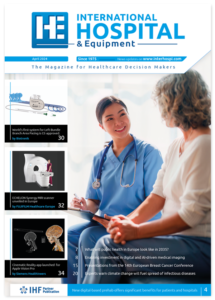Rising opioid prescriptions following low-risk surgeries
Physicians are prescribing more opioid painkillers than ever before to patients undergoing common surgeries, according to new research from the department of Anesthesiology and Critical Care at the Perelman School of Medicine at the University of Pennsylvania. Their work is published online simultaneously with a major new guideline from the Centers for Disease Control and Prevention (CDC) that calls on physicians to avoid over-prescription of opioids for surgical patients and other patients with painful conditions.
Opioid abuse and addiction is a growing concern in the U.S. with the National Institute on Drug Abuse estimating that approximately 2.1 million Americans suffer from substance use disorders related to prescription opioid pain relievers and an estimated 467,000 Americans are addicted to heroin, with increasing recognition of the strong relationship between opioid use and heroin abuse.
The new study, which included researchers from the University of Toronto, analysed insurance claims from 2004 through 2012 for 155,297 adults undergoing four common outpatient surgeries-carpal tunnel repair, laparoscopic gall bladder removal, some minimally invasive knee surgeries, and hernia repair. In an analysis of patients who had not received an opioid prescription in the six months preceding surgery, the researchers observed that four out of every five patients in the study filled a prescription for an opioid pain medication within the seven days after surgery. The percentage of patients who got those drugs increased over for the period studied all four surgical procedures.
Most notably, the amount of opioid medication dispensed to patients after surgery also increased markedly between 2004 and 2012 for all procedures studied. Among patients undergoing knee arthroscopy, for example, the investigators estimated a greater than 18 percent increase in the average total amount of opioid dispensed, driven by a change in the average daily dose.
‘These data show us a concerning trend,’ said the study’s senior author, Mark Neuman, MD, MSc, an assistant professor of Anesthesiology and Critical Care and director of the Penn Center for Perioperative Outcomes Research and Transformation (Penn CPORT). ‘The growth we observe over time in opioid prescribing after surgery occurs against the backdrop of a major public health crisis of prescription opioid abuse. Additional work is needed to understand how postoperative opioid prescribing patterns might play into this epidemic, and to define better strategies for treating postoperative pain safely and effectively in the future.’
The CDC’s guidelines address pain management outside of active cancer treatment, palliative care, and end-of-life care, recommending nonopioid therapy for the treatment of chronic pain, stating that opioids should be reserved for situations where the benefits for pain and function are expected to outweigh the risks. The guidelines also recommend that clinicians establish treatment goals before prescribing opioids and address how opioids can be discontinued if benefits do not outweigh risks. In addition, the CDC recommends that clinicians prescribe the lowest effective dosage, carefully reassessing benefits and risks when considering increasing dosage and evaluate the benefits and harms of continued opioid therapy with patients every three months or more frequently for high-risk combinations or dosages.
Penn Medicine http://tinyurl.com/gt5cjqw

